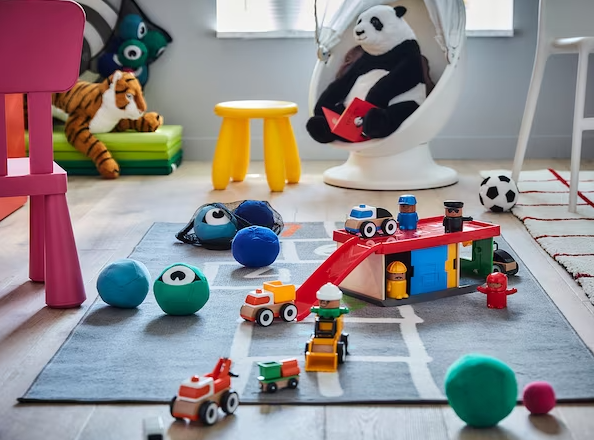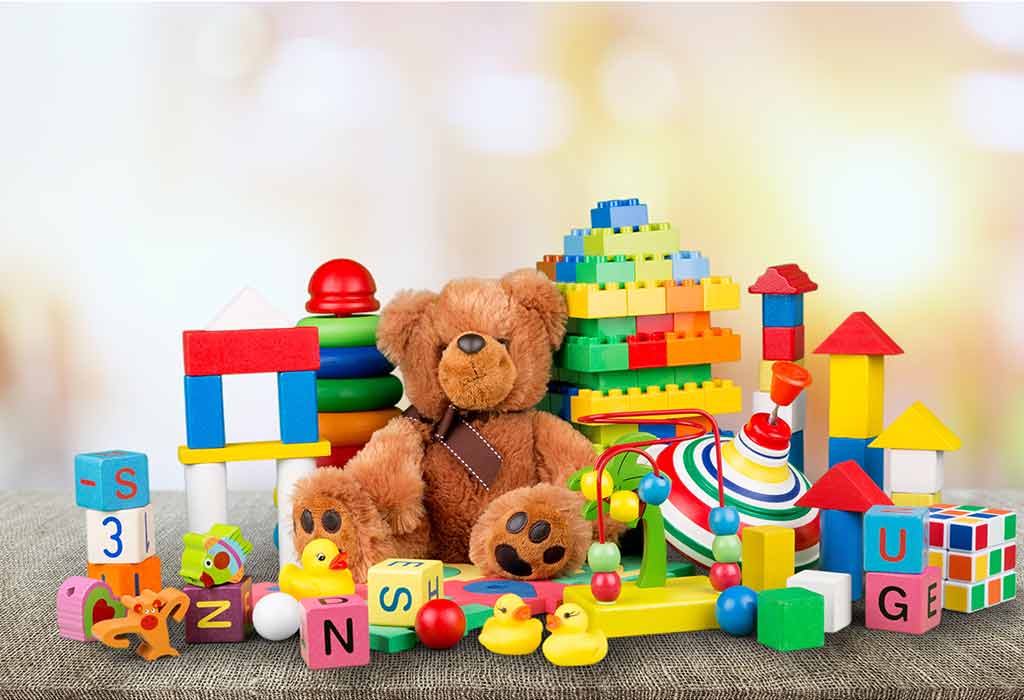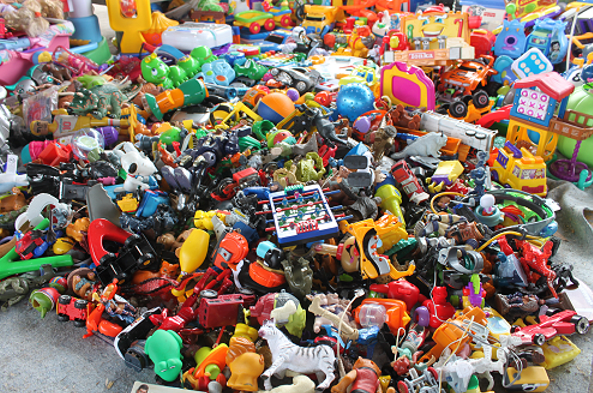Toys hold a special place in the hearts of children and play a pivotal role in their development. In this comprehensive article, we’ll explore the multifaceted world of toys, delving into their importance for children’s growth, the evolution of toy manufacturing, the impact of technology on toys, and the significance of choosing age-appropriate and educational toys for fostering holistic development.
Introduction: The Power of Play
Play as a Fundamental Right:
Play is a fundamental right of every child, recognized by the United Nations. It is through play that children explore the world, develop social skills, and enhance cognitive abilities.
The Role of Toys:
Toys act as instruments of play, serving as tools that facilitate various forms of learning and creativity. Beyond mere entertainment, toys contribute to the overall development of a child’s physical, cognitive, and emotional well-being.
The Evolution of Toy Manufacturing: From Simple to Sophisticated

Traditional Handcrafted Toys:
In the early days, toys were often handcrafted from materials readily available, such as wood, clay, and fabric. These toys reflected the cultural and artistic nuances of different societies.
Industrial Revolution and Mass Production:
The Industrial Revolution marked a shift towards mass production, making toys more accessible. Tin toys, dolls, and simple mechanical toys became popular during this era.
Plastic Revolution:
The mid-20th century witnessed the rise of plastic as a primary material for toy manufacturing. This revolution led to the creation of a wide variety of affordable and colorful toys.
The Impact of Technology on Toys: From Analog to Digital Play
Rise of Electronic and Interactive Toys:
Advancements in technology have given rise to electronic and interactive toys (https://leotoystore.com/collections/toys). From talking dolls to educational tablets, these toys provide a different dimension to play by incorporating sounds, lights, and interactive features.
Educational Apps and Games:
Smartphones and tablets have given birth to a new genre of educational toys in the form of apps and games. These digital tools aim to make learning engaging and interactive.
Balancing Analog and Digital Play:
While technology has introduced new possibilities, experts emphasize the importance of balancing analog and digital play. Traditional, hands-on toys are still crucial for promoting sensory experiences and creativity.
The Importance of Age-Appropriate Toys: Nurturing Development Milestones

Early Childhood Development:
Infants and toddlers benefit from toys that stimulate their senses and encourage motor skill development. Soft toys, rattles, and colorful objects engage their curiosity and promote hand-eye coordination.
Preschool and Elementary Years:
Educational toys become crucial during these years. Building blocks, puzzles, and interactive games enhance cognitive skills, problem-solving abilities, and social interactions.
Middle School and Beyond:
As children grow, toys that encourage creativity, critical thinking, and teamwork become valuable. Construction sets, science kits, and strategy games contribute to their intellectual and social growth.
Educational Toys: Fostering Learning Through Play
STEM Toys:
Toys that focus on science, technology, engineering, and mathematics (STEM) are gaining popularity. These toys not only entertain but also introduce children to fundamental concepts in these fields.
Language and Literacy Toys:
Books, word games, and language-building toys play a vital role in developing literacy skills. These toys cultivate a love for reading and enhance language proficiency.
Social and Emotional Learning Toys:
Toys that focus on social and emotional learning help children understand and manage their emotions. Board games, role-playing toys, and emotion-themed activities contribute to this aspect of development.
Choosing Quality Over Quantity: The Toy Box Dilemma
Mindful Selection:
In a world filled with an abundance of toys, parents face the challenge of mindful selection. Quality, safety, and educational value should take precedence over sheer quantity.
Rotating Toys:
To prevent toy fatigue and encourage creativity, some experts recommend rotating toys. This practice involves periodically swapping out a selection of toys to keep playtime fresh and engaging.
The Power of Unstructured Play:
While educational toys are beneficial, unstructured play is equally important. Simple, open-ended toys allow children to use their imagination and creativity freely.
Environmental Considerations: Sustainable and Eco-Friendly Toys
Plastic-Free Alternatives:
In response to environmental concerns, there is a growing demand for plastic-free toys. Wood, recycled materials, and eco-friendly fabrics are becoming popular choices for sustainable play.
Toy Recycling Programs:
Toy manufacturers are increasingly embracing recycling initiatives. Some companies have introduced programs to collect and repurpose old toys, contributing to a more sustainable approach to toy consumption.
Conscious Consumer Choices:
Parents are becoming more conscious consumers, opting for toys with minimal packaging, sustainable materials, and ethical manufacturing practices. This shift reflects a broader awareness of the environmental impact of consumer choices.
The Future of Toys: Innovations and Trends
Incorporation of Augmented Reality (AR) and Artificial Intelligence (AI):
The future of toys might witness a deeper integration of augmented reality and artificial intelligence. Interactive experiences that blend the digital and physical realms could become more prevalent.
Personalized Learning Toys:
Advancements in technology may lead to the development of personalized learning toys that cater to individual learning styles and preferences, providing a more tailored educational experience.
Continued Emphasis on STEAM Learning:
The focus on STEAM learning (Science, Technology, Engineering, Arts, and Mathematics) is likely to persist. Toys that encourage hands-on exploration and experimentation will continue to play a vital role in fostering these skills.
Playtime as a Catalyst for Growth
In conclusion, toys are not mere playthings; they are catalysts for growth, learning, and the development of crucial life skills. From traditional wooden toys to modern STEM-focused gadgets, the world of toys continues to evolve. As parents and educators, the emphasis should be on selecting toys that align with the developmental needs of children, foster creativity, and contribute to a well-rounded education. Whether analog or digital, educational or purely entertaining, toys play a pivotal role in shaping the minds and hearts of the next generation. Through thoughtful selection and mindful play, we can ensure that every toy becomes a stepping stone in the remarkable journey of childhood development.




